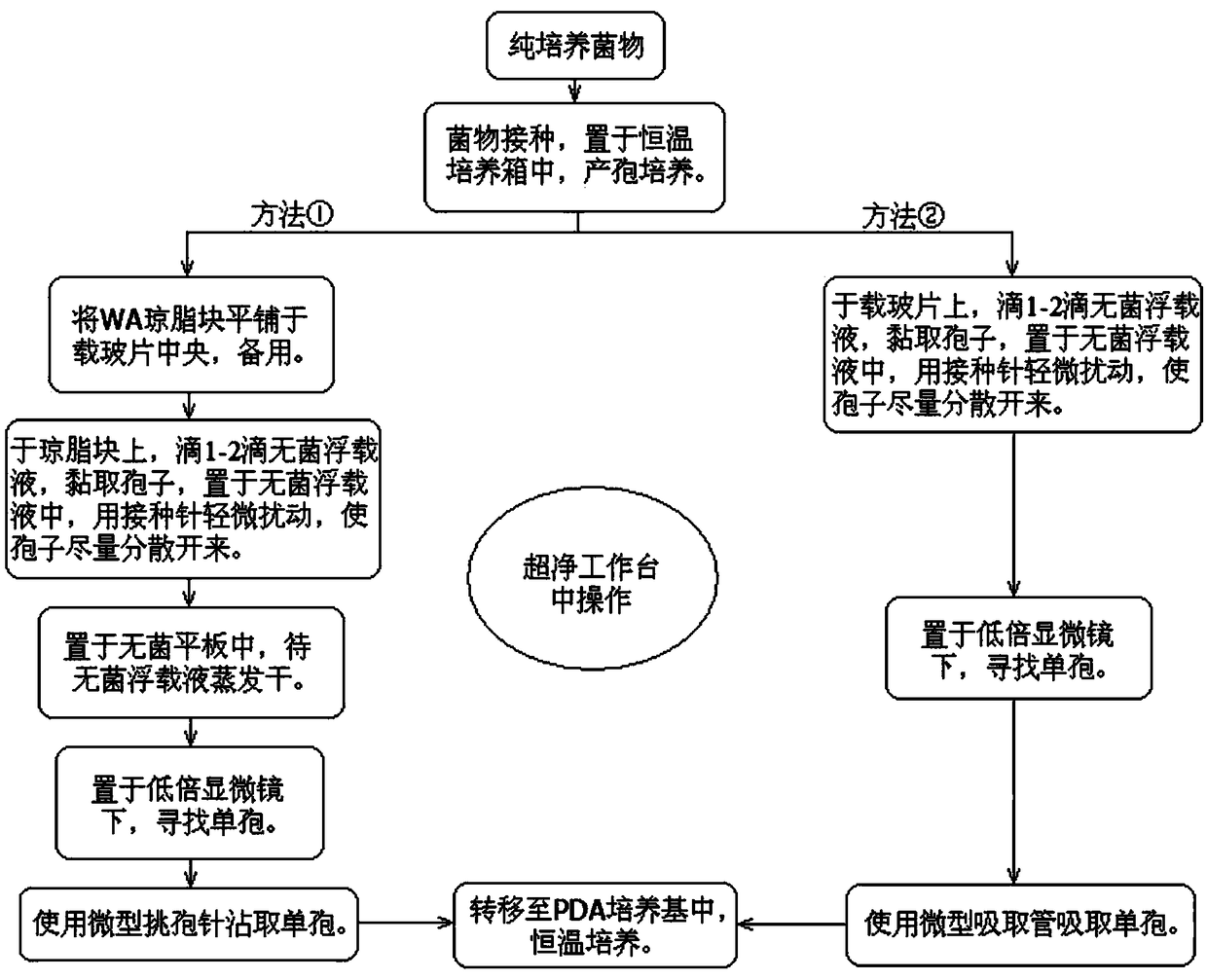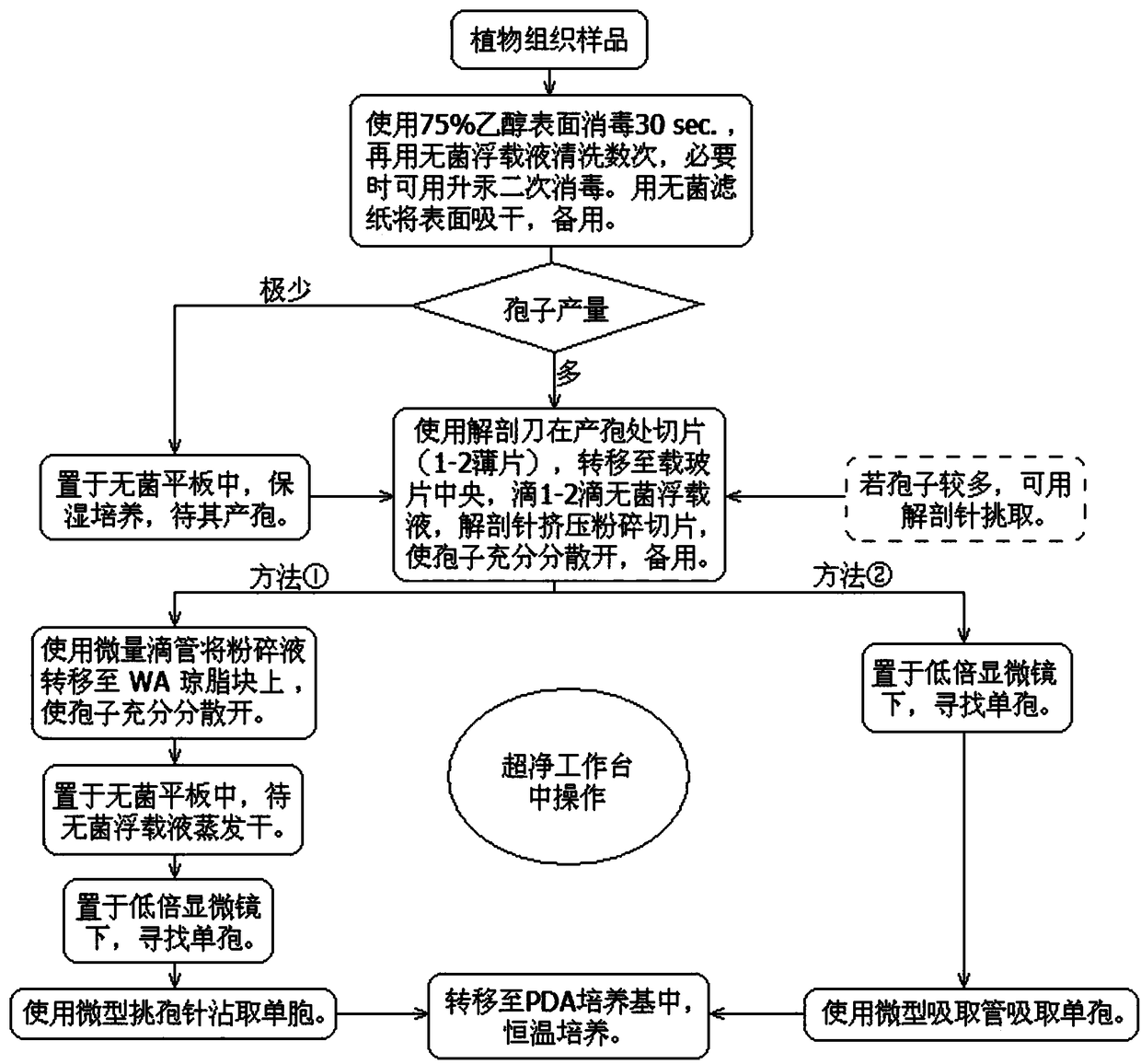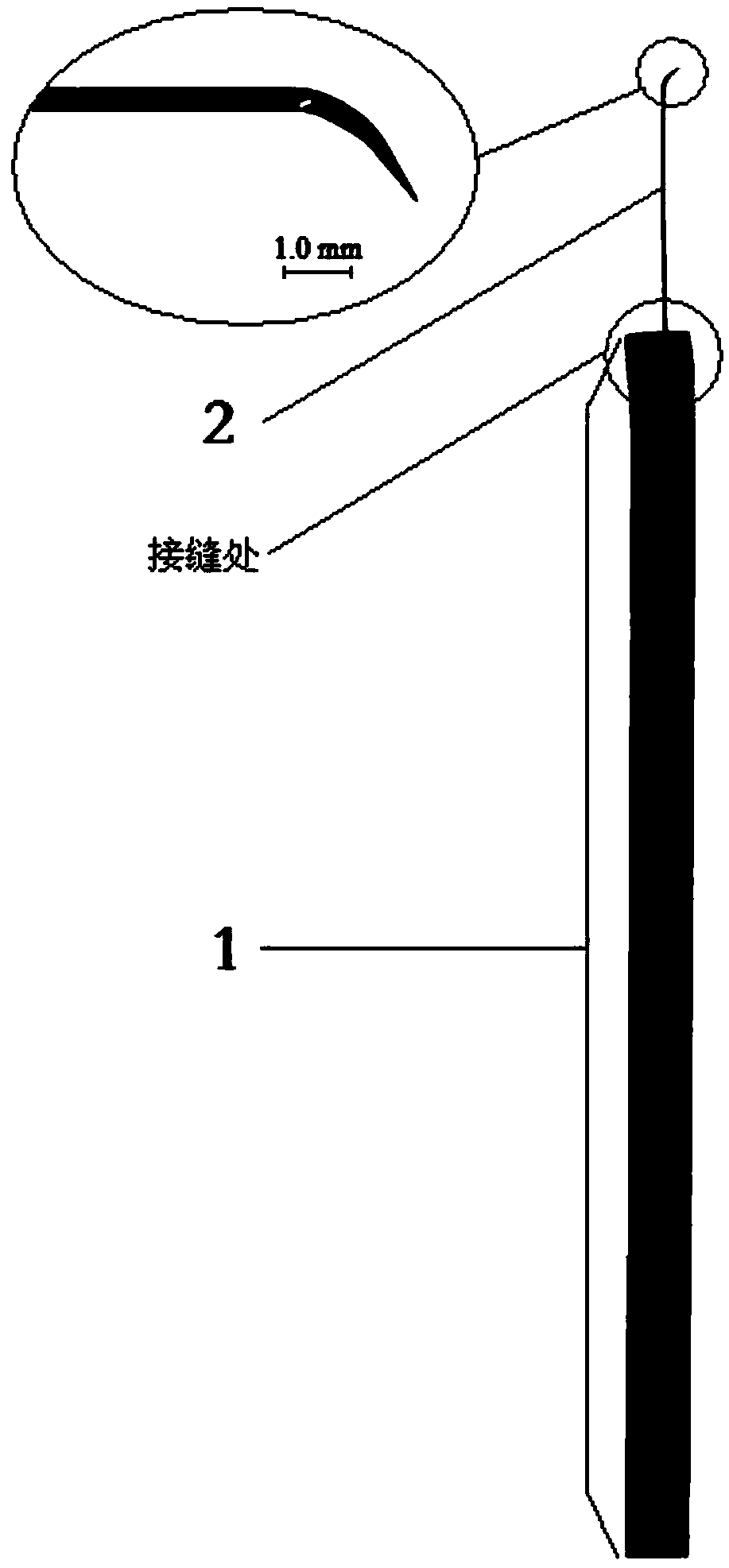Plant pathogen purification and isolation method
A plant pathogenic bacteria, purification and separation technology, applied in the field of plant disease purification and separation, can solve the problems of low purity, difficult target, thick needle tip, etc. to achieve the effect of wide applicability, flexible selection and adjustment, and various separation methods.
- Summary
- Abstract
- Description
- Claims
- Application Information
AI Technical Summary
Problems solved by technology
Method used
Image
Examples
Embodiment 1
[0059] Embodiment 1 Purification and separation method of plant pathogenic bacteria based on pure culture bacteria
[0060] The method adopts a miniature spore-picking needle, comprising the following steps: Step 1, preparing a single spore of pure cultured bacteria: get the pure cultured bacteria, use the inoculation needle to pick the bacterial block and inoculate it in the PDA medium (depending on the situation, other cultures can also be used) base), inoculate 1-3 dishes, transfer to a constant temperature incubator, incubate at a constant temperature of 25°C for 1-7 days, and wait for sporulation; during the cultivation process of pure culture bacteria, regular microscopic observation, if sporulation has occurred, that is The next step can be carried out. If no spores are produced, continue to cultivate. If no spores are produced after long-term cultivation, it is necessary to consider changing the medium and repeat the above steps until spores are produced;
[0061] Step...
Embodiment 2
[0066] Embodiment 2 Purification and isolation method of plant pathogenic bacteria based on pure culture bacteria
[0067] The method adopts a micropipette and comprises the following steps:
[0068]Step 1. Cultivate purely cultured bacteria monospores: take purely cultured bacteria, use an inoculation needle to pick out bacterial blocks and inoculate them in PDA medium, inoculate 1-3 dishes, transfer to a constant temperature incubator, and cultivate at a constant temperature of 25 °C for 1 -7d, wait for sporulation; during the culture process of pure culture fungus, regular microscopic observation, if sporulation has been produced, the next step can be carried out, if no sporulation, continue to cultivate, if no sporulation after long-term cultivation, need to Consider replacing the medium and repeat the above steps until sporulation;
[0069] Step 2. Preliminary preparation for absorbing single spores. Take out a sterile glass slide, wipe it clean with lens tissue and set...
Embodiment 3
[0074] Embodiment 3 Purification and isolation method of plant pathogenic bacteria based on plant tissue samples
[0075] The method adopts micro sporulation needles and comprises the following steps:
[0076] Step 1. Plant tissue sample acquisition and pre-treatment: Plant tissue samples are usually collected in the field, so before the unit cell isolation begins, it needs to be microscopically tested to check whether it has mature spores. If there is no and Ascocarp is immature, it needs to induce sporulation, if there is, the surface of the sample needs to be disinfected, that is, sterilized with 75% ethanol solution for 30sec., if necessary, use mercuric chloride for secondary disinfection, and then clean it with sterile floating solution Several times, then wipe and blot dry with sterile filter paper, and set aside.
[0077] Step 2. Tissue sectioning and single spore acquisition: Before tissue sectioning, it is necessary to determine the exact position of the pycnidium o...
PUM
| Property | Measurement | Unit |
|---|---|---|
| length | aaaaa | aaaaa |
| diameter | aaaaa | aaaaa |
| diameter | aaaaa | aaaaa |
Abstract
Description
Claims
Application Information
 Login to View More
Login to View More - R&D
- Intellectual Property
- Life Sciences
- Materials
- Tech Scout
- Unparalleled Data Quality
- Higher Quality Content
- 60% Fewer Hallucinations
Browse by: Latest US Patents, China's latest patents, Technical Efficacy Thesaurus, Application Domain, Technology Topic, Popular Technical Reports.
© 2025 PatSnap. All rights reserved.Legal|Privacy policy|Modern Slavery Act Transparency Statement|Sitemap|About US| Contact US: help@patsnap.com



